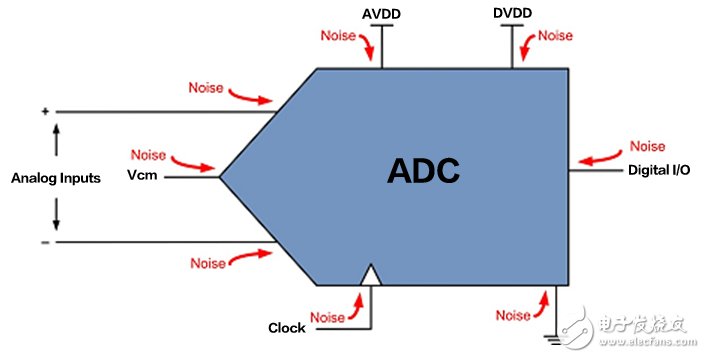
Data converters have become an important bridge between the analog and digital worlds and an integral part of the industry. Since the global economic recovery in 2011, the expanding industrial electronics market has brought new design opportunities to engineers. At the same time, engineers are gradually realizing that the advantages and disadvantages of data converters have become the decisive factor for the high performance of industrial equipment.
In view of this, in order to meet the strong demand for high-performance analog devices in the industrial electronics market, analog technologies, especially data conversion technologies, are rapidly evolving, and as the world's leading provider of data conversion and signal processing technology, Analog Devices will continue to lead. Technological innovations add to the design of engineers.
When an engineer considers noise in an ADC, the ADC can be considered roughly as a mixer. If noise enters the ADC from either port, it will be represented in the FFT of the output data. Now let's take a look at the modified version of Figure 1.
Figure 1 shows the noise entry, including the power input, analog input, and clock. However, there are still some missing entries that should also be considered when using the ADC. The first is the common mode voltage (Vcm) output, which provides a common mode level for the analog input. Second, digital input and output (I/O) can also be the way noise enters the ADC. Finally, there is one most easily overlooked entry-ground or circuit common.

Other ADC noise "entry"
Widely used in high speed ADCs to provide a common mode reference voltage for the ADC analog input. It is the midpoint voltage between the minimum and maximum range of the ADC input. This pin typically requires a decoupling capacitor of approximately 0.1 μF. This provides the main pole for filtering of output stability and high frequency noise. Proper decoupling is important because it provides a potential linear path for noise to enter the ADC analog input. Although it is an output, noise can be forced into the ADC's internal bias circuit.
In addition to capacitors, many ADCs with two or more channels also require a small amount of resistance in series between each connection of the Vcm output to each channel. This is also a way to reduce noise and often helps to reduce crosstalk between ADC channels. In other words, the additional series resistance helps to improve the isolation between channels so that the signal on one channel does not run to the other.
   How to "kill" ADC noise (2): I/O line and ground
This article is selected from the Electronic Consumers Network June "Smart Industry Special" Change The World column, please indicate the source.
Dog Trainer,Patpet Dog Training Collar,Petainer Dog Training Collar,Pet Resolve Dog Training Collar
Elite-tek Electronics Ltd , https://www.aetertek.ca